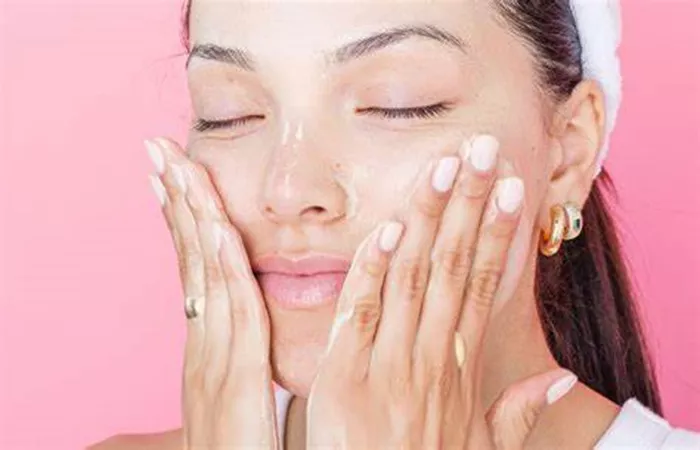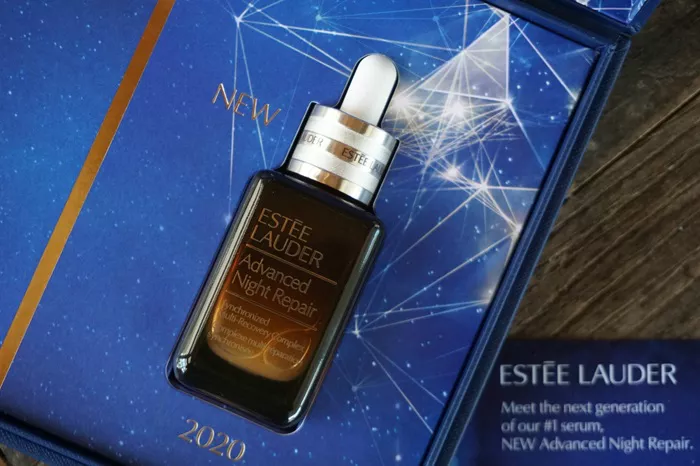When we think of skincare, our minds almost instantly gravitate towards facial routines. We envision cleansers, serums, moisturizers, and masks, all meticulously applied to achieve a glowing complexion. However, skincare is a concept that extends far beyond the face. The skin is the largest organ of the body, and it deserves comprehensive care. In this article, we will explore the importance of whole-body skincare, the different areas of the body that require attention, and why skincare should never be limited to just the face.
Why Do We Focus So Much on the Face?
The face is our most visible feature, the focal point of human interaction, and the area most exposed to environmental aggressors like pollution, UV rays, and harsh weather conditions. It’s no wonder that the beauty industry and consumers alike place a heavy emphasis on facial skincare. But this focus has led to a common misconception: that skincare is only necessary for the face.
The Reality of Whole-Body Skincare
The skin on your face is just a small fraction of the total skin on your body. While it’s true that the facial skin is often more delicate and prone to visible aging, the rest of your skin also requires regular care. Neglecting body skincare can lead to a host of issues, including dryness, irritation, premature aging, and more. To achieve truly healthy and glowing skin, a holistic approach is necessary.
Areas of the Body That Need Skincare
1. The Neck and Décolleté
The neck and décolleté (the area of the chest exposed by lower necklines) are often overlooked in skincare routines, yet they are just as prone to aging as the face. The skin here is thin and delicate, making it susceptible to wrinkles, sagging, and sun damage.
How to Care for It
Cleansing: Use the same gentle cleanser you use on your face.
Moisturizing: Apply your facial moisturizer or a specialized neck cream to keep the skin hydrated.
Sun Protection: This area is often exposed to the sun, so applying SPF daily is crucial.
2. Hands
Our hands are constantly exposed to the elements, and yet, they are frequently neglected in skincare routines. The skin on the hands is thin, and due to frequent washing and exposure to chemicals, it can easily become dry and cracked.
How to Care for It
Moisturizing: Use a rich hand cream regularly, especially after washing your hands.
Sun Protection: Just like your face, your hands need sunscreen to prevent sun damage and age spots.
Exfoliation: Gently exfoliate your hands once a week to remove dead skin cells.
3. Elbows and Knees
The skin on the elbows and knees is thicker and often more prone to dryness and roughness. These areas can easily become discolored and feel rough to the touch if not cared for properly.
How to Care for It
Exfoliation: Use a body scrub or a loofah to exfoliate these areas regularly.
Moisturizing: Apply a thick, emollient-rich cream to keep the skin soft and smooth.
Hydration: Incorporate products with urea or glycerin to attract and retain moisture.
4. Feet
Your feet bear the weight of your entire body and are subjected to friction, pressure, and sometimes neglect. This can lead to calluses, cracked heels, and dryness.
How to Care for It
Exfoliation: Regularly exfoliate your feet to remove dead skin cells.
Moisturizing: Use a foot cream, preferably one with ingredients like shea butter or salicylic acid to soften and hydrate the skin.
Special Treatments: Consider using foot masks or overnight socks for intense hydration.
5. Body Skin
The skin on your body may not be as delicate as your face, but it still requires consistent care. Dry skin, body acne, and premature aging are all concerns that can be managed with the right skincare routine.
How to Care for It
Cleansing: Use a gentle, hydrating body wash that doesn’t strip the skin of its natural oils.
Moisturizing: Apply body lotion or cream after showering while your skin is still damp to lock in moisture.
Exfoliation: Exfoliate regularly to keep the skin smooth and prevent ingrown hairs.
Sun Protection: Don’t forget to apply sunscreen to exposed areas like the arms, legs, and back.
6. Scalp
The scalp is an extension of the skin on your face, yet it’s often treated differently. A healthy scalp is crucial for healthy hair, and neglecting it can lead to issues like dandruff, dryness, and irritation.
How to Care for It
Cleansing: Use a gentle shampoo that suits your hair type and doesn’t irritate the scalp.
Exfoliation: Consider using a scalp scrub or a shampoo with salicylic acid to remove dead skin cells.
Moisturizing: If your scalp is dry, use a lightweight scalp oil or serum to restore moisture.
See Also: Why Organic Skincare is Better?
Common Skincare Issues Beyond the Face
Dryness
Dryness can affect any area of the body, leading to rough, flaky, and sometimes itchy skin. It’s often caused by environmental factors like cold weather, hot showers, and harsh soaps.
Solutions
Use Hydrating Products: Incorporate products with ingredients like hyaluronic acid, glycerin, and ceramides into your body care routine.
Avoid Hot Showers: Opt for lukewarm water instead to avoid stripping the skin of its natural oils.
Apply Moisturizer: Do this immediately after bathing to lock in moisture.
Body Acne
Body acne, commonly found on the back, chest, and shoulders, is often caused by a combination of sweat, friction, and clogged pores. Tight clothing and not showering after sweating can exacerbate the problem.
Solutions
Use Acne-Fighting Ingredients: Look for body washes and treatments with salicylic acid or benzoyl peroxide.
Exfoliate Regularly: This helps to keep pores clear and prevent breakouts.
Wear Breathable Fabrics: Opt for loose-fitting, breathable fabrics to reduce friction and allow the skin to breathe.
Hyperpigmentation
Hyperpigmentation can occur on various parts of the body, resulting in dark patches or spots. It’s often caused by sun exposure, hormonal changes, or skin injuries.
Solutions
Use Brightening Products: Ingredients like vitamin C, niacinamide, and licorice root extract can help lighten dark spots.
Protect from the Sun: Always apply sunscreen to exposed areas to prevent further darkening.
Consider Professional Treatments: For stubborn hyperpigmentation, treatments like chemical peels or laser therapy may be effective.
Premature Aging
Premature aging isn’t limited to the face; it can also affect the neck, hands, and other areas. Signs include wrinkles, sagging skin, and age spots, often caused by sun damage, lack of moisture, and neglect.
Solutions
Use Anti-Aging Products: Retinoids, peptides, and antioxidants can help improve the appearance of aging skin.
Hydrate and Moisturize: Keep the skin hydrated to maintain elasticity and reduce the appearance of fine lines.
Sun Protection: Daily application of sunscreen is crucial to prevent further aging and protect the skin.
The Role of Lifestyle in Skincare
Diet and Hydration
What you eat and drink has a significant impact on your skin’s health. A diet rich in antioxidants, healthy fats, and adequate hydration supports skin function and appearance.
How to Incorporate It
Eat a Balanced Diet: Focus on fruits, vegetables, lean proteins, and healthy fats.
Stay Hydrated: Drink plenty of water throughout the day to keep your skin hydrated from the inside out.
Supplement Wisely: Consider supplements like omega-3 fatty acids, vitamins C and E, and collagen for additional skin support.
Exercise
Regular exercise improves circulation, which in turn helps to nourish skin cells and keep them vital. It also aids in detoxification through sweating and promotes a healthy, radiant complexion.
How to Incorporate It
Engage in Regular Activity: Aim for at least 30 minutes of moderate exercise most days of the week.
Shower After Sweating: To prevent body acne and irritation, always shower after exercising to remove sweat and bacteria from the skin.
Protect Skin During Outdoor Activities: Apply sunscreen and wear protective clothing when exercising outdoors.
Sleep
Sleep is when your body repairs itself, including your skin. Lack of sleep can lead to a dull complexion, dark circles, and an increased risk of skin conditions like acne and eczema.
How to Incorporate It
Aim for 7-9 Hours of Sleep: Ensure you’re getting enough rest each night for optimal skin health.
Create a Nighttime Skincare Routine: Use this time to apply treatments that work best overnight, such as retinoids or rich moisturizers.
Sleep on a Silk Pillowcase: Silk pillowcases are gentler on the skin and can help reduce friction and irritation.
Stress Management
Chronic stress can wreak havoc on your skin, leading to issues like breakouts, eczema, and psoriasis. Stress triggers the release of cortisol, a hormone that can increase oil production and inflammation.
How to Incorporate It
Practice Stress-Relief Techniques: Incorporate activities like yoga, meditation, or deep breathing into your daily routine.
Prioritize Self-Care: Make time for activities that relax you and promote well-being.
Seek Professional Help if Needed: If stress becomes overwhelming, consider talking to a mental health professional.
Conclusion
Skincare is not just about having a beautiful face; it’s about caring for your entire body, inside and out. By adopting a holistic approach to skincare, you can ensure that every inch of your skin is healthy, hydrated, and protected. Remember that skincare is a form of self-care, and taking the time to nurture your skin will not only improve its appearance but also your overall well-being. From the neck and décolleté to the feet, every part of your body deserves attention and care. By extending your skincare routine beyond the face, you’ll achieve a balanced, radiant look that reflects true health and vitality. So, the next time you’re pampering your face, remember to give the rest of your skin the love it deserves.
[inline_related_posts title=”You Might Be Interested In” title_align=”left” style=”list” number=”6″ align=”none” ids=”11631,11594,11590″ by=”categories” orderby=”rand” order=”DESC” hide_thumb=”no” thumb_right=”no” views=”no” date=”yes” grid_columns=”2″ post_type=”” tax=””]


































